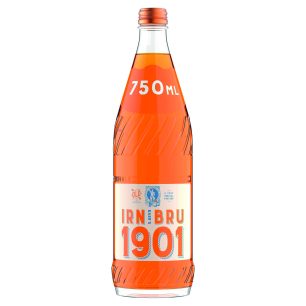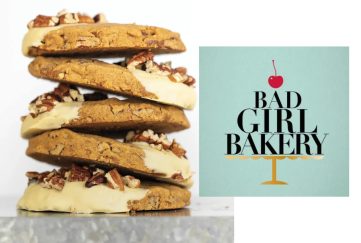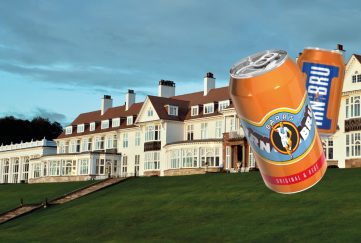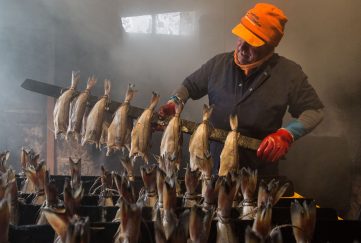Scottish Brands: The History Of IRN-BRU
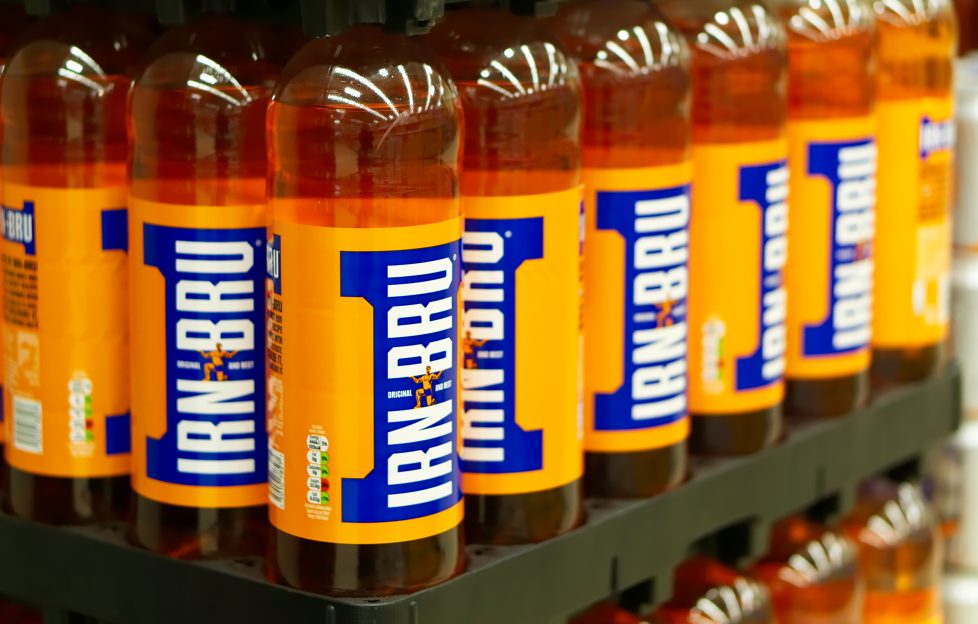
Discover the historical journey of popular Scottish brand IRN-BRU and how clever marketing propelled it to national success.
From world-famous IRN-BRU to Cream Soda and Cherryade, every Scot has surely tried a Barr drink.
The drinks are a staple of corner shops up and down the country, powering playparks full of excited children. For grown-ups, on the other hand, IRN-BRU is renowned as a hangover cure.
It all started in 1875 when Robert Barr set the family cork-cutting business on a new trajectory. The entrepreneur began producing aerated waters – today known as soft drinks – from their Falkirk factory.
Each drink was flavoured with fruit oils and IRON BREW, a secret recipe containing 32 flavours, was launched in 1901. Other popular Barr beverages of the time include Wee Macgregor Brew, Japanese Plum and Raspberry Cider.
According to the official IRN-BRU website, steel workers around the same time were re-building Glasgow Central Station and were reported to be drinking too much beer to combat the heat and their thirst.
In those days, the maximum alcohol level for sale as a non-alcoholic beverage was 1.1% alcohol – today it has been reduced to 0.5%. Therefore, many beverages were still being brewed with the higher fermentation cut-off.
Robert Barr’s company brought them this new tonic-like drink that could get the workers through each long, laborious day.
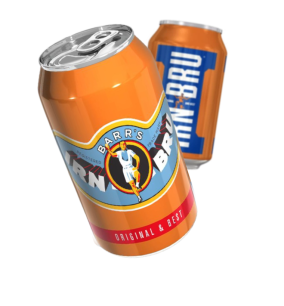
The famous Highland athlete, Adam Brown, of the late 19th century features on the original Irn-Bru labels and throwback rebrands.
Barr quickly became Scotland’s top soft drinks business and IRON BREW was its bestseller – cleverly marketed with testimonials from famous athletes.
Adam Brown, a famous Highland athlete of the late 19th century, is the iconic figure on the original labels.
The name change to IRN-BRU wasn’t a quirky act of modernisation, but a decision made in 1947 over changing food labelling regulations after the war. Although the mysterious orange elixir does contain traces of iron, it isn’t brewed.
However, the decision rejuvenated the brand and became a talking point.
Barr’s IRN-BRU has been responsible for some very memorable advertising campaigns. “Made in Scotland from girders” pokes fun at the drink’s negligible iron content – 0.002% ammonium ferric citrate.
Their update of animated film The Snowman has gone down in history – rivalling even the Christmas Coca-Cola truck for heralding in the festive season.
Barr has acquired other brands, too – including Tizer, Strathmore Water, Funkin Cocktails and Rubicon. Today the firm produces, sells and distributes a wider range of drinks than ever before.
IRN-BRU Timeline
- 1875 – Robert Barr begins producing and selling “aerated waters” in Falkirk.
- 1942 – IRON BREW goes off sale because of shortages due to the Second World War.
- 1974 – 330ml cans are introduced along with a redesign.
- 2004 – IRN-BRU’s popular “Phenomenal” ad is launched.
- 2005 – Diet IRN-BRU becomes a brand in its own right, with new packaging.
- 2006 – The famous Snowman Christmas TV ad hits screens.
- 2019 – IRN-BRU 1901 is released. Made to the authentic handwritten 1901 recipe from a book stored deep in the company archives.


